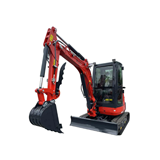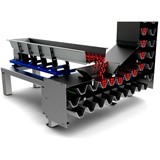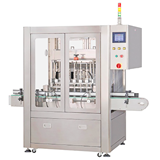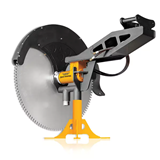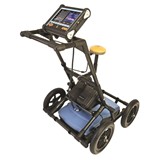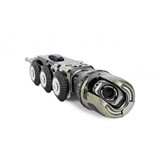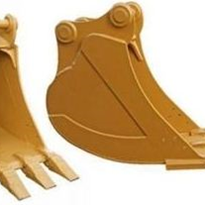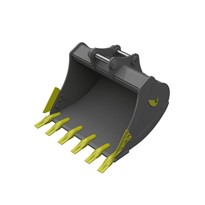Introduction
The buckets on these excavators are generally one of two main types - face shovels or backhoe. Face shovels dig forwards with an apron section on the front that opens away to release the product. The backhoe is a one piece bucket that digs back towards the machine.
Mining buckets may be an OEM product or may be custom engineered by a non-OEM manufacturer to suit site specific applications, whilst adhering to OEM equipment specifications.
When designed by a non-OEM manufacturer, buckets are often engineered with specific material types and density and standard digging practices in mind.
The Problem
Every force has an equal and opposite force and this theory applies no differently to mining buckets. Custom engineered buckets are usually designed to be used in post blasted or loose overburden ground.
The bucket and the OEM machine are not designed to dig in-situ or in to virgin ground or rock. Pre-blasting and bulldozer rippers are designed for that process.
In engineering to maximise bucket size, to give the greatest yield possible to meet mine site capacity requirements, the bucket is designed to withstand standard digging practices.
Unfortunately, mining excavators are sometimes subjected to misuse by an operator who may use the bucket for operations like lifting and repositioning the machine.
Using the bucket in this way means the loads are directly opposite to the parameters that the engineer has designed the bucket to. Misuse of a bucket in this way will typically result in a portfolio of common problems such as the following.
Actions which cause compression of the top box connection areas cause cracking and fatigue. Load on the bucket causing bulging of the side walls causes cracking and wear plates to crack from the bucket's sides. Point loading to the floor can eject the wear package and buckle or twist floor plates and side scraping with the bucket can cause it to twist.
The main offender in the creation of bucket issues is walking (repositioning) of the excavating machine via the bucket. This deviation from standard digging practices causes slew ring issues and boom and stick cracking.
The Solution
To prevent unnecessary maintenance expenditure, and extend bucket life, it is important to prevent bucket damage through ensuring best practice is used in the operation of excavating equipment.
Before any operation commences, the operator must know and understand the limitations and safety aspects of the machine as every machine is different.
Custom designed buckets suit each particular OEM machine, along with site specifi conditions, in order to maximise production and life expectancy of the bucket and machine.
It is the operator’s responsibility to monitor the digging conditions and ensure they are working in pre-blasted ground which meets the bucket’s tolerances. All digging needs to be completed in smooth actions reducing excessive loads to the machine and attachments.
Before each shift commences the operator should take a short period of time and physically inspect their bucket to identify any of the following visually obvious changes from last inspection:
- Visual cracking
- Loose, broken or missing ground engaging tools (GET) or wear plates
- Excessive wear areas, including weld wash around wear plates
- Grease systems are ejecting grease efficiently from each pin
- Covers are in place for pins and grease lines
- Bushes are not walking out of bores
- If a face shovel, ensure door and jaw are correctly aligned and cylinders are not leaking
All findings need to be reported immediately to the appropriate maintenance or asset management personnel to ensure all defects are resolved in their early stages.
A regular routine of pre-shift inspection, along with a focus on keeping within standard digging practice guidelines will result in extended mining excavator bucket life.


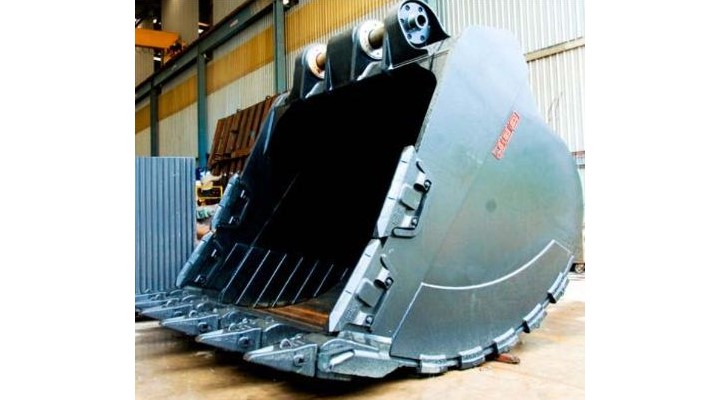
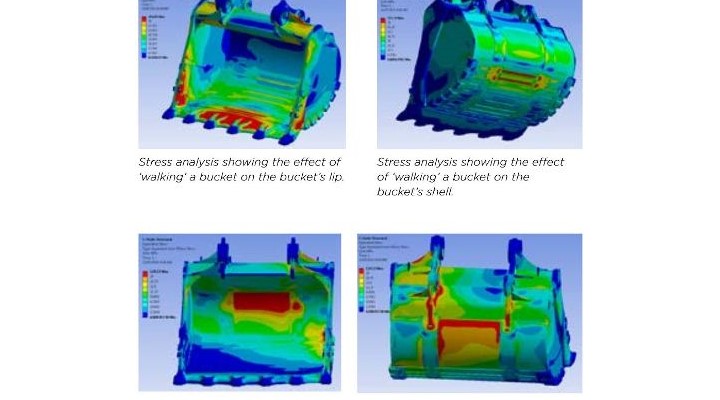
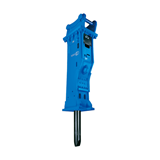
-160x160-state_article-rel-cat.png)
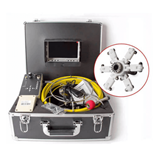
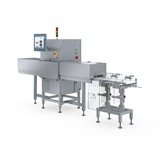

-160x160-state_article-rel-cat.png)





